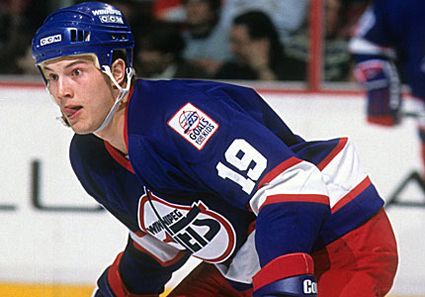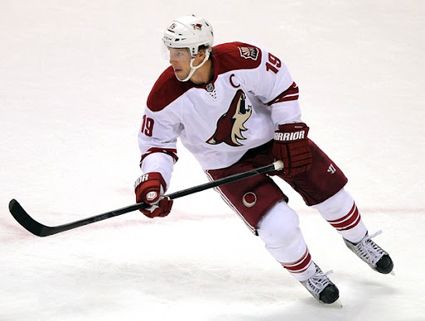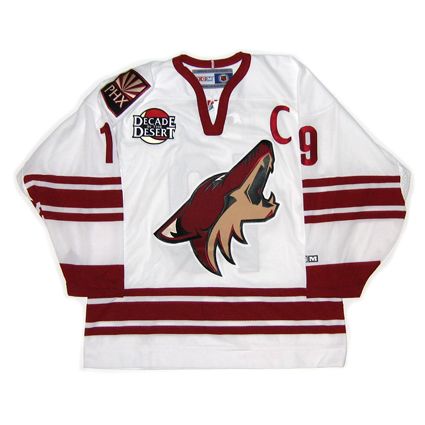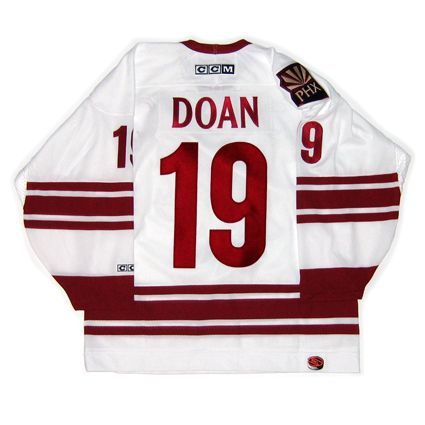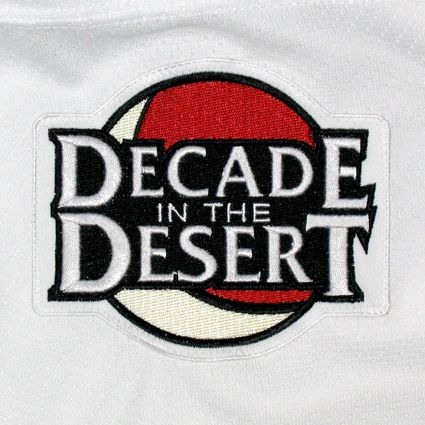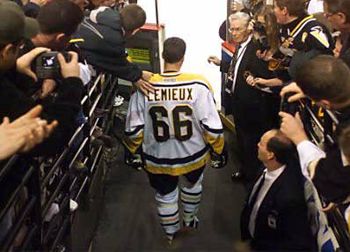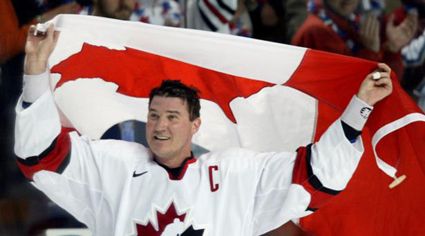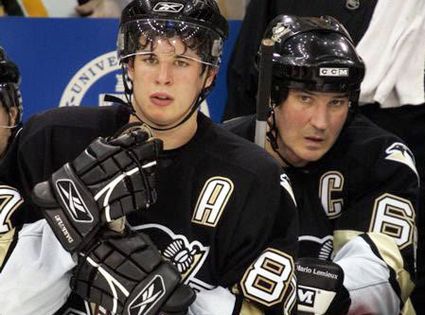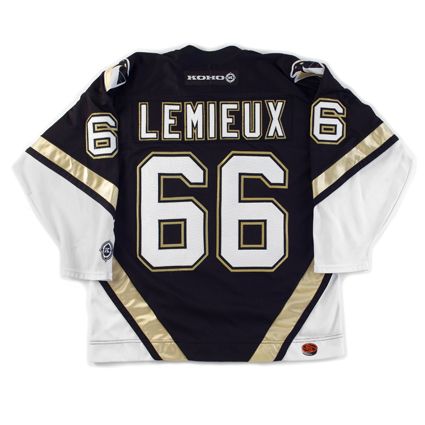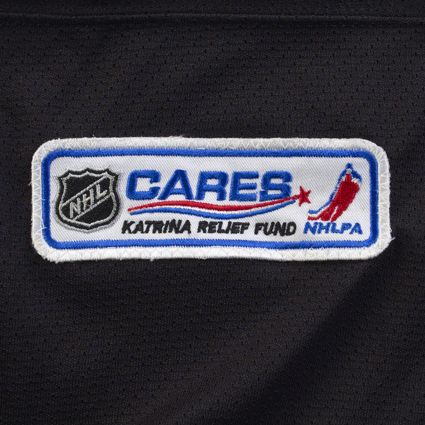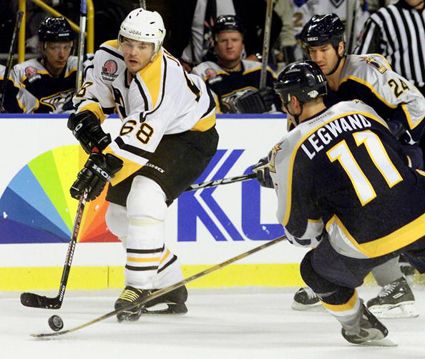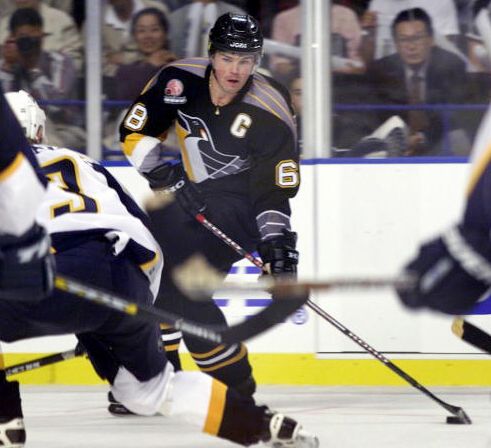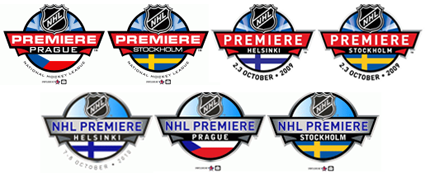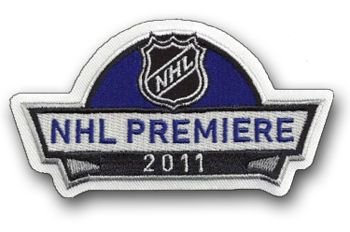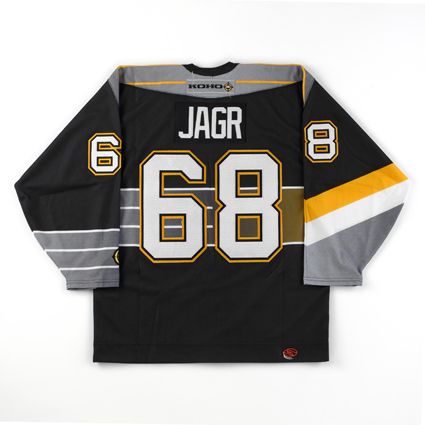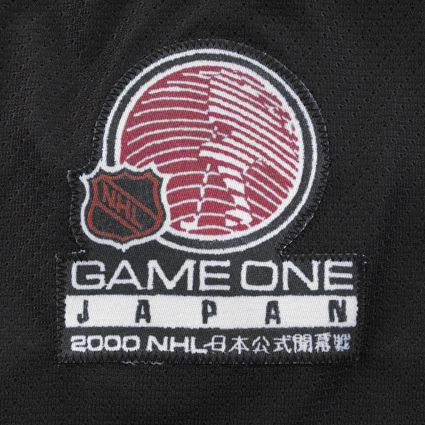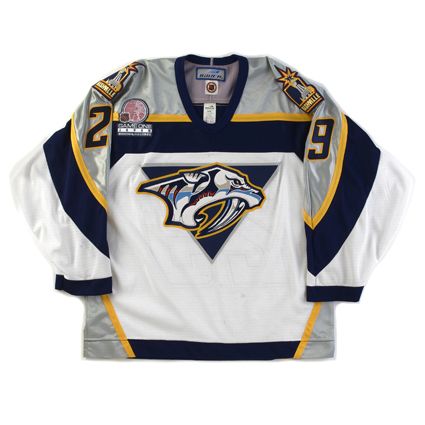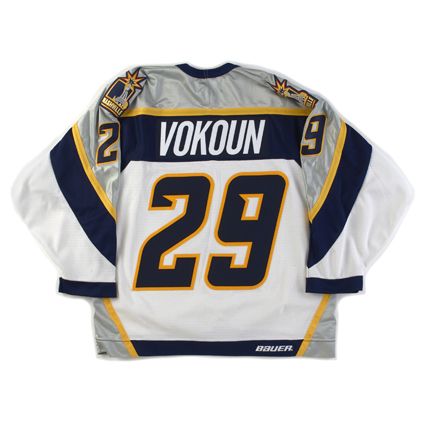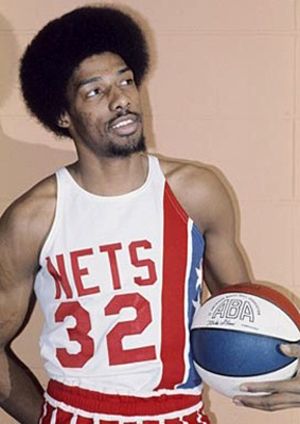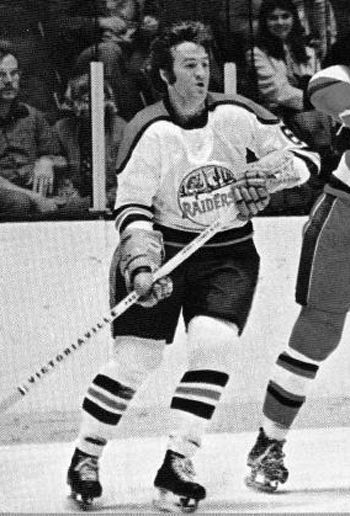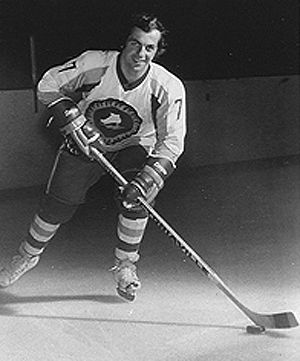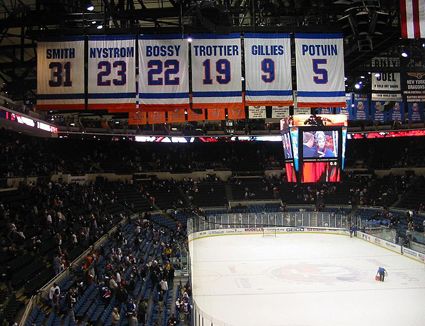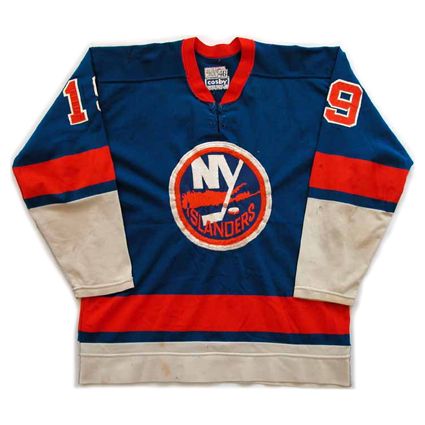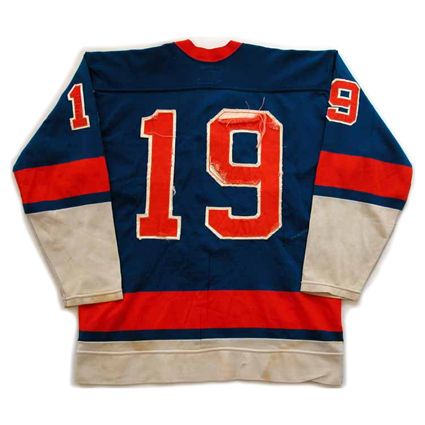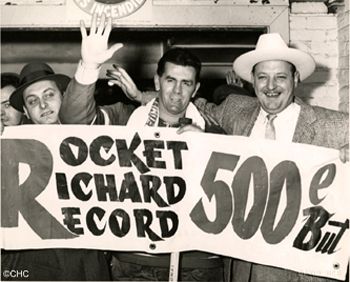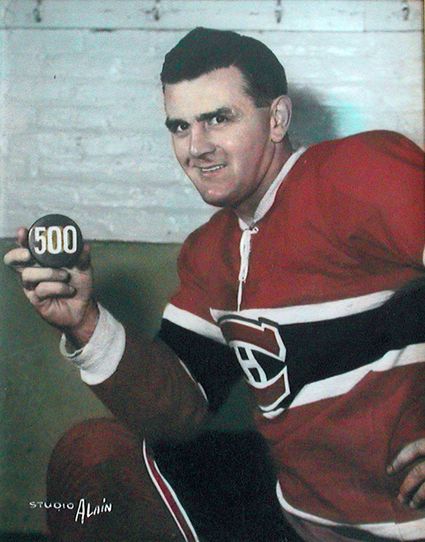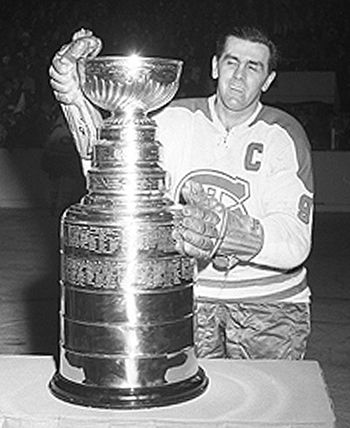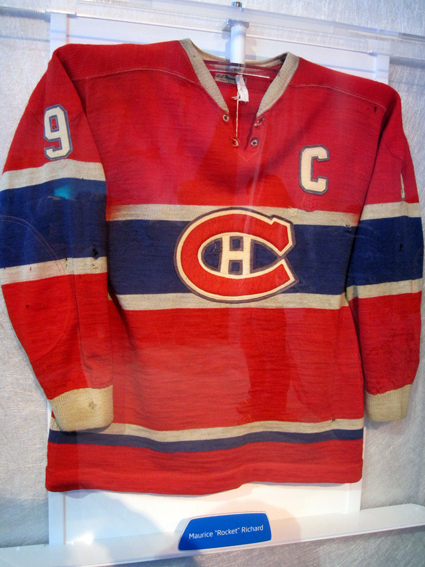Friday, October 10, 2014
2006-07 Phoenix Coyotes Shane Doan Jersey
Born on this date in 1976, Shane Doan was originally drafted by the franchise in the 1995 NHL Entry Draft with the seventh overall pick when they were still the Winnipeg Jets and he is the last remaining Coyote to have played for the Jets.
Doan entered the NHL with the Winnipeg Jets
After relocating to Phoenix in time for the 1996-97 season, Doan worked to establish a regular spot in the lineup and, after a stint in the minors in 1997-98, has spent the remainder of his career exclusively with Phoenix in the NHL.
Offensively he has become a steady goal producer, having scored at least 20 goals for nine consecutive seasons, with his highest season total being 31, just last year. 2007-08 saw him reach his highest point total with 78 on 28 goals and a career high 50 assists.
Doan was named captain of the Coyotes in 2003-04 and later that season made his first NHL All-Star Game appearance. His second All-Star appearance came in 2009 which was followed by his being named the winner the King Clancy Memorial Trophy in 2010 and the Mark Messier Leadership Award in 2012.
In addition to his play for the Coyotes, Doan has also made a number of appearances for Team Canada, beginning with the 1999 World Championships. Since then he has won three World Championship silver medals in 2005, 2008 and 2009 and a pair of golds in 2003 and then again in 2007 while he was team captain. During the 2007 tournament he would register a hat trick against Belarus in just 6 minutes and 25 seconds.
Doan also was a member of Team Canada in the 2004 World Cup of Hockey and has the distinction of scoring the game winning goal versus Finland in the gold medal game.
Today's featured jersey is a 2006-07 Phoenix Coyotes Shane Doan jersey that features the "Decade in the Desert" patch worn to celebrate the Coyotes 10th season in Phoenix after relocating from Winnipeg.
The jerseys are much more simplified than their predecessors and have been said to have drawn their inspiration from the old Soviet National Team jerseys of 1972.
Plenty of video today. First up is a nice tribute to Shane Doan with a lot of goals and some of the rough stuff followed by another very well done tribute which covers more of his international career.
Next is a recent interview with Shane Doan from this summer covering several current topics, including the Coyotes current relocation situation and steroids.
Here is a crazy situation where the Flames have a possible goal scored, but play continues nearly two full minutes until Doan scores for Phoenix, causing the officials to have to go back and check the closest replay call we've ever seen to determine if Calgary's possible goal would negate Doan's! You won't believe how close the call is on the Calgary goal.
Last up today is the announcement of Doan being named the Coyotes captain in 2003 followed by an interview with him after being named captain of Team Canada for the 2007 World Championships.
Ok, ok. One more just because it's his birthday, a humorous TV commercial for a bank featuring Shane.
Labels:
Doan Shane,
Phoenix Coyotes
Wednesday, October 8, 2014
2005-06 Pittsburgh Penguins Mario Lemieux Jersey
On this date in 2005, Mario Lemieux suited up for the final home opener of his NHL career.
Lemieux had retired from the Penguins back in 1997 due to back injuries, but the club still owed him $32.5 million in deferred salary. The team owners were forced to declare bankruptcy in November of 1998, owing over $90 million in all and looking like they were either going to have to move to a new city or perhaps even fold the franchise. That was when Lemieux, the team's largest creditor, converted the majority of his deferred salary into equity under a plan where he became part of a group to take control of the club and promising to keep the team in Pittsburgh.
Now being a part owner of the Penguins as of September 1, 1999 Lemieux realized that the Penguins greatest asset was - himself, despite not having played a game since 1997! He returned to the ice on December 27, 2000 and proceeded to score a goal and a pair of assists in his first game back.
During the 43 games he played during the remainder of the 2000-01 season, Lemieux scored 76 points, the highest points-per-game average of any player that season, and led the Penguins to the conference finals.
Now being a part owner of the Penguins as of September 1, 1999 Lemieux realized that the Penguins greatest asset was - himself, despite not having played a game since 1997! He returned to the ice on December 27, 2000 and proceeded to score a goal and a pair of assists in his first game back.
Lemieux's comeback in 2000 was a turning point
in the resurrection of the Penguins franchise
During the 43 games he played during the remainder of the 2000-01 season, Lemieux scored 76 points, the highest points-per-game average of any player that season, and led the Penguins to the conference finals.
The 2001-02 season saw Lemieux appear in only 24 games after his season was cut short due to chronic hip injuries aggravated while captaining Canada to the gold medal in the Olympics held in Salt Lake City. He would play in just a single game following the Olympics.
The following season would see Lemieux manage to play in 67 games and total 91 points, leading the scoring race for much of the year before missing most of the games near the end of the schedule and the Penguins would miss the playoffs for the second year in a row.
He would only play but ten NHL games in 2003-04, with just a single goal to his credit. That fall he would make his final appearances for Team Canada, captaining the squad that captured the championship in the 2004 World Cup of Hockey. He would score a goal and four assists in six games played.
After the lockout season of 2004-05, he would return to the ice for the start of the 2005-06 season and skate along side Sidney Crosby for 26 games at age 40.
before finally calling it a career on January 24, 2006. He would score 22 points in 26 games that season, but felt he could no longer compete at the level he was accustomed to in the past.
Sidney Crosby and Mario Lemieux during the 2005-06 season,
their only one sharing the ice together
before finally calling it a career on January 24, 2006. He would score 22 points in 26 games that season, but felt he could no longer compete at the level he was accustomed to in the past.
Today's featured jersey is a 2005-06 Pittsburgh Penguins Mario Lemeiux jersey as worn in the home opener of his final season as an NHL player. The jersey features the NHL Cares/Katrina Relief Fund patch worn during the first period of each NHL team's first home game of the season.
The patched jerseys were then auctioned off to raise money to aid the victims of Hurricane Katrina, which devastated New Orleans, Louisiana in August of 2005. Lemeiux's game worn jersey generated the third highest final price league-wide with a final bid of $6,710 behind rookies Crosby ($21,010) and Alexander Ovechkin ($7,929). Overall the auction of 600 jerseys raised over a half a million dollars, which was then matched by the Garth Brooks' Teammates for Kids Foundation.
Here is the beginning of Lemieux's second return from retirement on December 27, 2000 after becoming owner of the Penguins.
This video shows Mario Lemieux's final goal of his career after being high sticked earlier in the video along with a rare Ziggy Palffy sighting in a Penguins jersey, as he would retire mid-season along with Lemieux.
Labels:
Lemieux Mario,
Pittsburgh Penguins
2000-01 Pittsburgh Penguins Jaromir Jagr Jersey
Today we take a look back at the opening games of the 2000-01 season when the Nashville Predators played a two game series against the Pittsburgh Penguins in Tokyo, Japan.
The Premiere games were held in Europe one final time in 2011, the fifth consecutive season the NHL schedule began overseas. The schedule was a bit more complex, as the four teams swapped opponents in games played in three different cities. The Anaheim Ducks defeated the Buffalo Sabres in Helsinki while the Kings beat the New York Rangers in overtime in Stockholm. The next day the Ducks traveled to Sweden to meet the Rangers, who they defeated in a shootout. Meanwhile, both the Sabres and the Kings relocated to Berlin, Germany in a game won by Buffalo. To date, these are the final games played by NHL teams outside North America, including exhibition games.
All four teams wore the same truncated patch lacking the flag of the host nation in 2011, an unsatisfying compromise owing to three of the clubs playing in two different countries on consecutive days.
Today's featured jersey is a 2000-01 Pittsburgh Penguins Jaromir Jagr jersey as worn in Tokyo for the second Game ONe Japan series on this date in 2000, the final NHL game ever played in Japan.
Bonus jersey: Today's bonus jersey is a 2000-01 Nashville Predators Tomas Vokoun jersey as worn in Tokyo for the second Game ONe Japan series on this date in 2000, the final NHL game ever played in Japan.
The Predators took to the ice wearing this style jersey for their inaugural 1998-99 season and it remained unchanged until the 2005-06 season when the shoulder patches were changed to a saber-toothed tiger skull logo. It would continue to be used with the new secondary logos through the 2006-07 season after which the team got new jerseys upon the arrival of Reebok as the new league supplier.
This would be the third and final time that the NHL would open it's season in Japan. 1997 saw the Vancouver Canucks split a pair of games against the Mighty Ducks of Anaheim, the first ever regular season games played outside of North America to count in the standings, while 1998 saw the Calgary Flames take on the San Jose Sharks.
After taking a break in 1999, the season opening games in Japan returned for the 2000-01 season. The first game took place on October 7th when the Penguins and the Predators took to the ice in front of 13,849 fans at the Saitama Super Arena with Pittsburgh wearing white as the designated "home" team.
Jan Hrdina got Pittsburgh's lone goal while Cliff Ronning, Vitali Yachmenev and Scott Walker scored for Nashville with Yachmenev getting the second goal and credit for the game winner.
Predators goaltender Mike Dunham got the win for Nashville by stopping 25 of the 26 Penguins shots. Jean-Sebastian Aubin took the loss in the nets for Pittsburgh even though he made 30 saves on 32 shots, with the third Nashville goal into an empty net.
Jaromir Jagr on the attack for Pittsburgh
Predators goaltender Mike Dunham got the win for Nashville by stopping 25 of the 26 Penguins shots. Jean-Sebastian Aubin took the loss in the nets for Pittsburgh even though he made 30 saves on 32 shots, with the third Nashville goal into an empty net.
The next game, played on this date in 2000. would be the final NHL game to date played in Japan. The Penguins turned the tables and won by the same 3-1 score with Hrdina, Robert Lang and Martin Straka all scoring for the heavily European Penguins (with just five of 20 players being North Americans), while David Legwand countered for Nashville, who now wore white as the "home" team.
The NHL would continue to play some exhibition games in Europe following the final game in Japan in 2000. The Colorado Avalanche played a game in Sweden against Brynas in 2001 and the Toronto Maple Leafs went to both Sweden and Finland in 2003 for games against Djurgardens IF, Farjestads BK and Jokerit of Helsinki. Those games would not count in the standings until the more recent NHL Premiere series began when the Anaheim Ducks played against the Los Angeles Kings in London, England's 02 Arena with a pair of games to kick off the 2007-08 season.
Wearing black, the Penguins were the "road" team for the second game
The NHL would continue to play some exhibition games in Europe following the final game in Japan in 2000. The Colorado Avalanche played a game in Sweden against Brynas in 2001 and the Toronto Maple Leafs went to both Sweden and Finland in 2003 for games against Djurgardens IF, Farjestads BK and Jokerit of Helsinki. Those games would not count in the standings until the more recent NHL Premiere series began when the Anaheim Ducks played against the Los Angeles Kings in London, England's 02 Arena with a pair of games to kick off the 2007-08 season.
In 2008-09 with the Ottawa Senators and Pittsburgh Penguins played in Stockholm, Sweden while the New York Rangers squared off against the Tampa Bay Lightning in Prauge, Czech Republic.
The NHL Premiere series returned to Europe in 2009-10 as the Chicago Blackhawks and Florida Panthers faced off in Helsinki and the Detroit Red Wings took on the St. Louis Blues in Stockholm.
Of note, both the Penguins in 2009 and the Blackhawks in 2010 would go on to win that season's Stanley Cup after starting their seasons in Europe.
The schedule of games expanded in 2011, with six clubs making the trip over, beginning with the Minnesota Wild and Carolina Hurricanes in Helsinki. The Columbus Blue Jackets met the San Jose Sharks in Stockholm while the Phoenix Coyotes faced off against the Boston Bruins in Prague in the Czech Republic.
The Premiere games were held in Europe one final time in 2011, the fifth consecutive season the NHL schedule began overseas. The schedule was a bit more complex, as the four teams swapped opponents in games played in three different cities. The Anaheim Ducks defeated the Buffalo Sabres in Helsinki while the Kings beat the New York Rangers in overtime in Stockholm. The next day the Ducks traveled to Sweden to meet the Rangers, who they defeated in a shootout. Meanwhile, both the Sabres and the Kings relocated to Berlin, Germany in a game won by Buffalo. To date, these are the final games played by NHL teams outside North America, including exhibition games.
Aside from the 2007 games played in London, all the remaining regular season games played overseas have featured a special patch worn on the participating teams jerseys.
All four teams wore the same truncated patch lacking the flag of the host nation in 2011, an unsatisfying compromise owing to three of the clubs playing in two different countries on consecutive days.
The 2011 NHL Premiere patch
This unusual asymmetric jersey arrived in 1995-96 among the first wave of alternate NHL jerseys. While some were complete failures and lasted just one season, such as those worn by the Mighty Ducks of Anaheim and the Los Angeles Kings, the Penguins jersey was promoted to the team's full time road jersey two seasons later and remained in use through the 2001-02 season.
The Predators took to the ice wearing this style jersey for their inaugural 1998-99 season and it remained unchanged until the 2005-06 season when the shoulder patches were changed to a saber-toothed tiger skull logo. It would continue to be used with the new secondary logos through the 2006-07 season after which the team got new jerseys upon the arrival of Reebok as the new league supplier.
Our video section today features two clips of the Mighty Ducks and Kings beginning the current NHL Premiere series of games in Europe to start the 2007-08 season.
Tuesday, October 7, 2014
1972-73 New York Islanders Craig Cameron Jersey
Born as a result of a hasty effort by the National Hockey League to prevent the rival upstart World Hockey Association from placing a team at the Nassau Veterans Memorial Coliseum, the New York Islanders played their first game on this date in 1972.
The Nassau Coliseum
Located less than 30 miles from New York City on Long Island, the Coliseum originally held roughly 13,000 for hockey and slightly more for basketball, as the arena was also home to the New York Nets of the American Basketball Association from 1972 until 1977, who brought two ABA championships to New York behind the play of "Dr. J" Julius Irving.
Dr. J, Julius Irving
Some of the other teams to have called the Coliseum home have been the New York Arrows of the Major Indoor Soccer League (1978-1984), the New York Express, also of the MISL (1986-1987), the New York Saints of the National Lacrosse League (1989-2003) and the New York Dragons of the Arena Football League (2001-2008).
The Coliseum saw it's seating capacity expanded in the early 1980's to 16,250 for hockey and up to 18,100 for concerts. The arena has also hosted some of the World Wrestling Federation's biggest events as well as boxing and NCAA basketball regional round games.
In addition, some notable concerts have also been held there, including David Bowie, Queen, Bruce Springsteen, Billy Joel and was one of only two venues in the United States to host Pink Floyd's live show of "The Wall".
The motivation to quickly create the Islanders came about due to the new WHA planning on placing it's flagship franchise, the New York Raiders, in the brand-new Coliseum, a plan which was met with rejection by Nassau County officials, who wanted nothing to do with the new league which they did not consider to be major league. With the only way to legally keep the WHA out of the Coliseum being to place an NHL team there, and despite the fact the New York Rangers did not think highly of a competing team just 19 miles down the road, a hastily awarded team was given to Long Island in November of 1971, along with a second new club, the Atlanta Flames, to keep the league balanced.
While the plan cost the Islanders a $4 million territorial rights fee paid to the Rangers, it cost the Raiders even more, as they were forced to play in Madison Square Garden as tenants of the Rangers! Needless to say, the Rangers were less fans of the Raiders, who belonged to the rival WHA, than they were of the Islanders, who at least were members of the same NHL.
The WHA's New York Raiders
The unfavorable terms of the Raiders lease was a burden on the club, and when very few fans showed up to buy tickets, the original owners defaulted before the first season was even complete. WIth the league now owning the club, it was then sold to a new owner for the second WHA season and renamed the Golden Blades.
Andre Lacroix of the short-lived New York Golden Blades
The Golden Blades saw as few as 500 people show up, and 20 games into year two, the franchise once more became property of the league, who moved them to Cherry Hill, New Jersey, a suburb of Philadelphia for the remainder of the 1973-74 season where they had to play in a tiny arena (capacity 4,416) so awful it has achieved legendary status as the visiting teams not only had to put on their gear back at their hotel, but also skate uphill for two out of three periods thanks to a slope in the ice surface! Following the conclusion of the season, the franchise was moved to San Diego, California, seemingly as far from New York as possible! The formation of the Islanders had ultimately had the desired effect the NHL had hoped for.
The Islanders started slowly, preferring to build their club through the draft and passed on the temptation to sign veteran players, especially in light of the rapidly increasing size of player contracts due to competition from the WHA. The first year Islanders were led in scoring by Billy Harris, who managed 28 goals and 50 points in 78 games. For comparison, Phil Esposito led the league with 55 goals and 130 points.
The Islanders lost their first game at home 2-3 to the Flames on this date in 1972, but won their second game 3-2 over the Los Angeles Kings to earn their first victory in front of their home fans in their new arena.
It was not something the fans should have gotten used to however, as the Islanders dropped their next four games at home before a tie with the Chicago Black Hawks ended their inaugural homestand with a 1-5-1 record. For the remainder of the season, they would win 9 more games at home and only 2 on the road. Losing streaks of 12, 8, 7 games, as well as another winless streak of 12 doomed the Islanders to a distant last place with a 12-60-6 record for just 30 points, 18 back of the California Golden Seals and 35 back of fellow first year club the Flames!
However, their roster included not only Harris, but center Lorne Henning (63 games), wingers Bob Nystrom (11 games) and Gary Howatt (8 games) plus goaltender Billy Smith (37 games) who would remain with the team and achieve the heights of hoisting the first of four consecutive Stanley Cups just seven years later.
The Islanders hoist the first of four consecutive Stanley Cups
Bill Torrey, general manager of the Islanders tells his version of the competition with the Raiders and the rise of the Islanders. "The WHA originally wanted to get into the Nassau Coliseum but once the NHL made the commitment to put the Islanders there, I sensed we were in a situation that my club would be a target for the new league. The WHA put a team in New York at Madison Square Garden. THe Raiders wanted to weaken us as best as they could. I let them do it in a way. There were six or seven players that signed with the WHA that I had offered two-way, short-term contracts. I had a hunch they wouldn't accept my offer, but that was okay because I felt by building with younger players that we would draft, the Islanders would develop quicker and be better off in the long run.
At the time, the NHL was a two-division league. There really wasn't much chance for us to finish anywhere but where we finished, be it with a handful of wins and points. That wasn't important at the time. The WHA signed three or four players who I didn't care about and a couple of others who would have helped our organization. Still, we established a policy where our drafts, in '72, '73 and '74, would be all great ones. WE had a chance to let our future players mature faster. In the short term, it was tough. But in the big picture, things worked out well for us."
Their last place finish in 1972-73 allowed them to select franchise cornerstone Denis Potvin with the first overall pick in the 1974 NHL Draft. The following year the Islanders picked Clark Gilles fourth overall and Bryan Trottier in round two and the Islanders had the foundation for their dynasty of the early 1980's.
Time has passed the Coliseum by however, as it is now the second oldest building in the NHL with the lowest capacity (not to mention the lowest average attendance) and is viewed as an unsuitable building in the modern NHL, mainly due to it's lack of private suites and other modern features which provide essential money making opportunities for the club. Despite repeated attempts to replace it, none ever came to fruition and the club will now play one final season in their long time home before moving 25 miles west to the Barclays Center in Brooklyn, New York for the 2015-16 season.
Today's featured jersey is a 1972-73 New York Islanders Craig Cameron jersey. The first season of play for the Islanders saw them wear what would become the jersey the club would return to over and over again, despite a number of attempts to change to something different.
The orange numbers were unique to the first year Islanders jerseys, as they would be changed to white for the 1973-74 season and remain so on their dark jerseys ever since. The white sleeve ends and lace up collar would remain for the first five seasons before both disappeared in 1977-78, the same season names arrived on the back for good.
Our video section today takes a look at the history of the New York Islanders.
Monday, October 6, 2014
1959-60 Montreal Canadiens Maurice Richard Jersey
Maurice Richard made his NHL debut with the Montreal Canadiens in the 1942-43 season with five goals in 16 games. He established himself as an NHL regular the following season leading the Canadiens with 32 goals while playing in 46 of Montreal's 50 games, which was good for 6th place in the league goal scoring race, just six back of league leader Doug Bentley's 38. He also added 12 goals in nine playoff games to earn his first Stanley Cup ring.
He set the hockey world on it's ear the following season, as in just his second full season in the NHL he not only led the league in goals but accomplished the unthinkable by becoming the first man to ever score 50 goals in 50 games, a feat that took 36 years to equal and only four other men have ever duplicated.
Richard came back down to Earth the following season with just 27 goals, which included passing the 100 goal mark, as well as earning his second Stanley Cup, but rebounded with a strong 45 tallies in 1946-47 to lead the league in goals for a second time and be named the Hart Trophy winner that season. Scoring was down league wide in 1947-48, as Richard managed just 28 goals to finish just five back of league leader Ted Lindsay's 33.
After just 20 goals in 1948-49, which allowed him to surpass the career 200 level, Richard had another strong season with 43 goals in 1949-50 to beat Gordie Howe by eight to win his third goal scoring title. He backed that up with a nearly identical 42 goals the following season, bested only by Howe's 43.
He netted 27 in 1952 to leave the 300 plateau in the distance and 28 more in 1953 as he won his third Stanley Cup. 1953-54 was the first of three consistent seasons with 37 (to lead the league). He became the first man to ever reach 400 career goals when he scored 38, which tied for the league lead with teammate "Boom Boom" Geoffrion, in 1954-55.
Richard scored another 38 goals in 1955-56 and got his fourth consecutive season over 30 with 33 in 1956-57, a season which saw him named team captain and lead the Canadiens to the first of five consecutive Stanley Cups under his captaincy.
The 1957-58 season saw him limited to just 28 games due to an Achilles tendon injury, but it was enough to allow him to score 15 goals that season, including his milestone 500th goal in 1957, making him the first man in NHL history to reach the magical 500 goal plateau at a time when no other player had ever reached 400 career goals!
Richard's career was now winding down and his final two seasons were curtailed by injuries, limiting him to 42 games and 17 goals in 1958-59 and his final season rose to 51 games and 19 goals to put his final career regular season goal total at 544 as well as 82 additional playoff goals as he won eight Stanley Cup rings.
Richard at the conclusion of the final game of his career with the 1960 Stanley Cup
Following his career, the Richard would become only the second Canadiens player to have his sweater number retired when Montreal raised Richard's #9 to the rafters on this date in 1960, following Howie Morenz, whose #7 was retired following his death from a heart attack five weeks after being hospitalized after breaking his leg during a game.
Today's featured jersey is a 1959-60 Montreal Canadiens Maurice Richard jersey. This jersey is from Richard's final season and features the captain's "C" on the left chest.
Today's featured jersey is a 1959-60 Montreal Canadiens Maurice Richard jersey. This jersey is from Richard's final season and features the captain's "C" on the left chest.
The iconic Canadiens jersey would remain essentially unchanged throughout the entirety of Richard's career, with the largest "change" being the addition of numbers to the sleeves in 1958.
Here is footage from Maurice Richard's 500th goal.
Here is a look back at Richard's career on the occasion of the 50th anniversary of his 500th goal.
Labels:
Montreal Canadiens,
Richard Maurice
Subscribe to:
Comments (Atom)

